The Transformed Arab Community: The Profound Teaching Methodology of Prophet Muhammad (ﷺ)
Introduction
Prophet Muhammad (ﷺ) is the greatest teacher mankind has ever seen. His teachings included truth-seeking, justice, helping others, virtues, humanity, humility, love and other premium qualities moulded with spiritual, scientific and psychological nuances. The teachings given by the Prophet (ﷺ) illuminate the straightforward road to success, and these teachings will effectively remain applicable in all the ages to come. The court of the Messenger of Allah (ﷺ) attracted his companions with a sense of curiosity, as they eagerly gathered to acquire knowledge from him. They would seek to enrich their understanding by being in his presence, fostering a deep desire to learn and grow spiritually. Once Urwa bin Mas'ud Al-Saqafi (r.a.) proudly said: “People! By God, I have gone to kings and heads, and I have come to Chosroes, Caesar and Negus. But by God, I have not seen anyone honored by his companions as I saw the companions of Muhammad honoring Muhammad (ﷺ)...” What lies at the heart of this remarkable mentor? Undoubtedly, a portion of the enchanting essence of his unparalleled teaching style enwraps the disciples from within. Let us delve into all those delightful attributes present in the teachings of the Prophet (ﷺ).
The Prophet (ﷺ) as a Teacher
Allah the Almighty addressing the nobel teaching character of the Prophet (ﷺ) says in the Holy Qur’an: “It is He Who has sent amongst the Unlettered a messenger from among themselves, to rehearse to them His Signs, to sanctify them, and to instruct them in Scripture and Wisdom,- although they had been, before, in manifest error.”[1] This verse clearly reveals certain fundamental aspects: 1) greatness of Allah Ta'ala, 2) responsibility of the Messenger, 3) The state of the Ummah and 4) the practical purpose of knowledge.
Therefore he was sent as a teacher to a society whose condition was deplorable; whereas people were mired in the darkness of ignorance. They had lost the path of guidance and the true message. Explaining this darkness, Allah Ta'ala says in another verse: "Or (the Unbelievers' state) is like the depths of darkness in a vast deep ocean, overwhelmed with billow topped by billow, topped by (dark) clouds: depths of darkness, one above another: if a man stretches out his hands, he can hardly see it! for any to whom Allah giveth not light, there is no light!.”[2]
In such a socio-cultural situation, the Messenger of Allah (ﷺ) was sent as a teacher to transform the community from its state of ignorance and moral decay into a enlightened and morally upright society, guided by the divine principles he conveyed. Witnessing this responsibility of teacher and understanding the sense of accountability, the Messenger of Allah (ﷺ) said: “Verily I have been sent as a teacher.”[3] In saying so, it has to be acknowledged that his teaching style was one-of-a-kind, incorporating psychology, the illustration of truths, practical examples, life lessons, visionary guidance, and patient instruction. He effectively conveyed his teachings through his own way of life and practical actions. Here, we will analyze the special features, differences and effectiveness of the pedagogy applied by the Prophet (ﷺ).
Teaching with Practical Theory
The companions were attracted by the Prophet's (ﷺ) pure lifestyles. The Prophet's (ﷺ) companions saw his actions and behaviors. Thus, they became interested in translating them into their lives. All of his words were effective and attractive to others as the Prophet (ﷺ) used to give orders to others only after he himself practiced, as the Holy Quran instructs: "O ye who believe! Why say ye that which ye do not?"[4] In fact, the life of Prophet Muhammad (ﷺ) serves as the true embodiment of the teachings found within the Qur'an. His actions, character, and choices resonate with the principles and values laid out in the holy text, showcasing how the holy text's guidance comes to life. Witnessing this, Umm al-Mu’minīn Aisha al-Ṣiddīqah (r.a.) upon being asked the character of Messenger of Allah (ﷺ) said: “Verily, the character of the Prophet (ﷺ) was Qur'an.”[5]
Teaching with Moderate Pace
The Messenger of Allah (ﷺ) never hurried or lagged in delivering his message. Instead, he navigated at a natural and gradual pace with proper technique to ensure the comprehension of novice learners remained undisturbed. With the same purpose, the complete Qur’an was revealed sporadically throughout 23 years to provide better contextual practice rather than legislating a set of laws on fresh people in a flash. In a hadith, Jundub bin Abdullah (r.a.) reported: “We were with the Prophet (ﷺ), and we were strong youths, so we learned faith before we learned Qur'an. Then we learned the Qur'an and our faith increased thereby.”[6]
The Qur'an's teaching methodology is highly impactful. In the initial phase of propagating Islam in Mecca, the focus was on building 'faith' and imparting fundamental teachings. Subsequently, the Qur'an progressively addressed the broader content, delving into the rules of Aḥkām and various other aspects. This sequential approach allowed for a comprehensive understanding to be developed over time.
Dialogue and Mutual Questions
Using a skillful technique of dialogue and mutual questioning, the Prophet Muhammad (ﷺ) engaged his companions in thought-provoking conversations. In one such instance, he posed a hypothetical scenario to them, asking, "If there was a river at the door of any one of you and he took a bath in it five times a day, would you notice any dirt on him?" The companions responded, "Not a trace of dirt would be left." In his wisdom, the Prophet (ﷺ) then drew a profound parallel, saying, "That is the example of the five prayers with which Allah blots out (annuls) evil deeds."[7] This insightful comparison highlighted the cleansing and purifying nature of the daily prayers in absolving wrongdoing.
From the narration above, some of the teaching methods of the Prophet (ﷺ) can be extracted. First thing is to make the content simple and clear with real examples so that it is easy to understand. Clear understanding leads to practical action as seen in the hadith. Another point to note is that in this hadith the method of teaching through dialogue and mutual questioning with the companions of the Prophet (ﷺ) is quite effective. The benefits of prayer are described by the Prophet (ﷺ) with indescribable beauty that easily captures the heart of all. The melodious demonstration of the Messenger (ﷺ) is illustrated in another sub-heading below.
Display and Demonstration
Utilizing an effective display and demonstration technique, the Prophet Muhammad (ﷺ) skillfully conveyed profound insights. In one such instance, reported by ‘Abdullah bin Mas’ud (r.a.), the Prophet (ﷺ) drew a square, and a line in the middle of the square, and lines to the side of the line in the middle of the square, and a line outside the square, and he said: “Do you know what this is?” They said: “Allah and His Messenger (ﷺ) know best.” He said: “Man is the line in the middle, and these lines to his side are the illnesses and problems that assail him from all places. If one misses him, another will befall him. The square is his life span, at his neck; and the line outside it is (his) hope.”[8] What a beautiful technique it was to teach things in the best way possible. This profound demonstration not only captivated their attention but also conveyed the intricate interplay between life's challenges, mortality, and human aspiration.
Encouraging Practice, Exploration and Reward
A student cannot know the practical process of any science without practice. If you do not find a solution to a problem by searching yourself, the accuracy of knowledge is unknown. The promise of rewards in teaching has always been an incentive in all levels of education from primary to higher stages. These entire aspects can be duly found in the teaching method of the Prophet (ﷺ). In the multicultural city of Medina, the Messenger (ﷺ) made another person judge in a case relating to Jews community of the city. The Prophet's (ﷺ) motivation for inquiry from another hadith narration can be understood in the following. The prophet (ﷺ) emphasized the efforts end enquiry; not the final result.
Amr bin al-'As (r.a.) reported that he heard Allah’s Messenger (ﷺ) saying, “When a judge gives a decision, having tried his best to decide correctly and is right, there are two rewards for him; and if he gave a judgment after having tried his best (to arrive at a correct decision) but erred, there is one reward for him.”[9]
Iterative Method
Employing an iterative teaching approach, the Prophet Muhammad (ﷺ) engaged his companions in a dialogue that delved into profound matters of faith. During a journey, as Mu’adh bin Jabal (r.a.) rode behind him, the Prophet (ﷺ) seized moments of interaction, repeatedly addressing him. This method drew Mu'adh's (r.a.) attention and participation, creating an atmosphere of receptive learning. Mu’adh bin Jabal (r.a.) narrated: While I was riding behind the Prophet (ﷺ) as a companion rider and there was nothing between me and him except the back of the saddle, he said, “O Mu`adh!” I replied, “Labbaik ya Rasool Allah wa Saidaik!” (I am here). He proceeded for a while and then said, “O Mu`adh!” I said, “Labbaik ya Rasool Allah wa Saidaik!” He then proceeded for another while and said, “O Mu`adh ibn Jabal!” I replied, “Labbaik ya Rasool Allah wa Saidaik!” He said, “Do you know what is Allah's right on His slaves?” I replied, “Allah and His Messenger know better." He said, “Allah's right on his slaves is that they should worship Him and not worship anything besides Him.” He then proceeded for a while, and again said, “O Mu`adh ibn Jabal!” I replied. “Labbaik ya Rasool Allah wa Saidaik!” He said, “Do you know what is (Allah’s) slaves’ (people’s) right on Allah if they did that?” I replied, “Allah and His Messenger know better.” He said, “The right of (Allah's) slaves on Allah is that He should not punish them (if they did that).”[10]
Emphasis can be placed on a topic by using the recursive method and the student's attention is also maintained. It can also be called the ta'qid process applied by Rasool (ﷺ). Many words the Prophet (ﷺ) used to say three times. Moreover, in the said description, it is also very well understood how the children want to be treated by a teacher. Ayesha (r.a.) reported that the Messenger used to speak in such a way that if one wanted to count his words, then they too could be counted. The uniqueness of the Prophet’s (ﷺ) speech granted by Allah Ta'ala is be his Jawāmi'ul Kalim (brief words with comprehensive meaning) which no one else in the world has achieved in comparison.
Teaching without Punishment
Illustrating his teaching philosophy of patience and compassion, the Prophet Muhammad (ﷺ) employed a method that upheld guidance without resorting to punishment. Anas bin Malik (r.a.) recounts his ten years of service to the Prophet (ﷺ), during which he never experienced even a minor harsh word denoting impatience or blame for his actions. This approach fostered an environment of gentle guidance and understanding, allowing individuals to learn and develop without undue criticism or chastisement. As Anas's (r a.) narration goes: "I served the Prophet (ﷺ) for ten years, and he never said to me, “Uf” (a minor harsh word denoting impatience) and never blamed me by saying, “Why did you do so or why didn't you do so?"[11] This anecdote exemplifies the Prophet's (ﷺ) remarkable ability to teach and guide through patience and positivity.
Revolutionary Result
During the period of Arabia known as Age of Jahiliyyah (ignorance), the Prophet’s (ﷺ) teaching influenced the world's best generation. In a society renowned for being fierce warriors and inundated poets, the Prophet (ﷺ) made them and their successors world-class writers, generals, physicians, travelers, economists, Sufis, community leaders, teachers and academics.
The effects of the Prophet's (ﷺ) teachings are so immense that they can't be fully captured in words. His teachings brought about a shift from darkness to light, replaced injustice with fairness, and turned a time of ignorance into a period of great learning. All these positive changes are a result of his teachings. Since Islam is the only religion accepted by Allah, the teachings of the Prophet (ﷺ) will always remain effective.
Reference
Al-Qur'an. (English Translation by M. Yusuf Ali)
EV, H. Â. (2017). LEARNING-TEACHING METHODS OF THE PROPHET MUHAMMAD (P.B.U.H.). The Journal of International Social Research, 10 (50), 462-466.
Ghuddah, S. A. a.-F. A., & Mahomedy, M. M. (2015). Muhammad - The Perfect Teacher. Muslims at Work Publications.
Gultekin, V. (2012, November 9). The Educational Methods of Our Prophet (PBUH). The Pen Magazine. https://thepenmagazine.net/the-educational-methods-of-our-prophet-pbuh/
Idriss, I. D., & Muhammad, A. A. (2021). The Teaching Methods and Techniques Of The Prophet (PBUH): An Exploratory Study. Journal Of Hadith Studies, 6.
Sahih al-Bukhari. (English Translation from Sunnah.com)
Sahih al-Muslim. (English Translation from Sunnah.com)
Sunan ibn Majah. (English Translation from Sunnah.com)
Teaching Methods of Prophet Muhammad (PBUH) – The Islamic Seminary of America. (2022, October 12). The Islamic Seminary of America. Retrieved August 19, 2023, from https://islamicseminary.us/teaching-methods-of-prophet-muhammad-pbuh/
Endnotes
[1] Al-Qur’an, Surah al-Jum’ah (62:2), (Translation by Yusuf Ali).
[2] Al-Qur’an, Surah al-Noor (24:40).
[3] Sunan ibn Majah, Bab Fadl al-Ulama wa al-Haththi ala Talab al-Ilm (Translation from Sunnah.com)
[4] Al-Qur’an, Surah As-Saf (6:2), (Translation by Yusuf Ali).
[5] Sahih Muslim, Kitab Swalat al-Musafir wa Qasriha
[6] Sunan ibn Majah, Babun fi al-Imaan
[7] Sahih al-Bukhari, Kitab Mawaqit al-Swalat
[8] Sunan ibn Majah, Kitab al-Zuhd
[9] Sahih al-Muslim, Kitab al-Akqdiyah
[10] Sahih al-Bukhari, Kitab al-Riqaq
[11] Sahih al-Bukhari, Kitab al-Adab
About the author
Md Sohel Mondal, from Jharkhand, is a PG Scholar in the Department of Civilizational Studies at Darul Huda Islamic University, Kerala. The author regularly writes in English and Bengali on a range of topics focusing on Islam and current affairs. His recent book is ‘15 Characteristics of the Prophet Muhammad’. Email: mdsohelmondal60@gmail.com
Disclaimer
The views expressed in this article are the author’s own and do not necessarily mirror Islamonweb’s editorial stance.

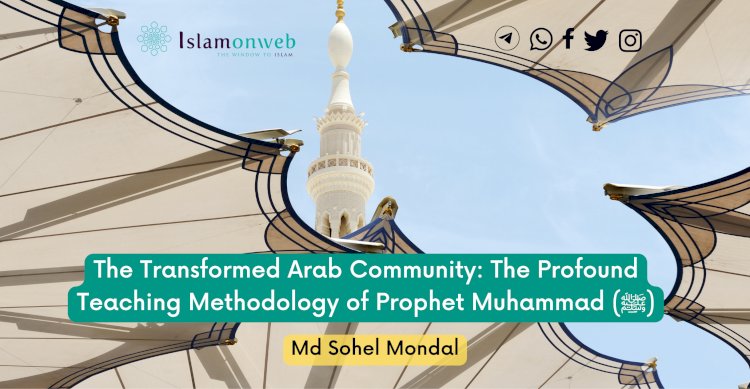



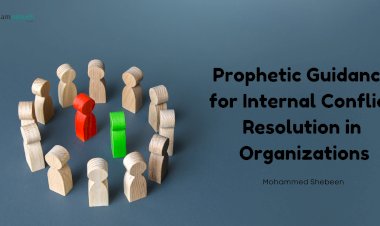
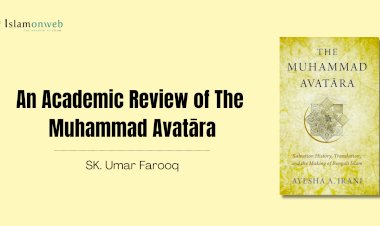
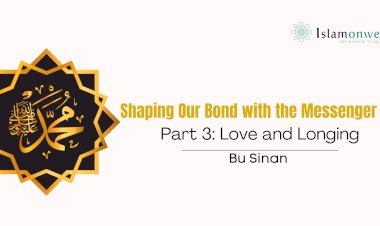
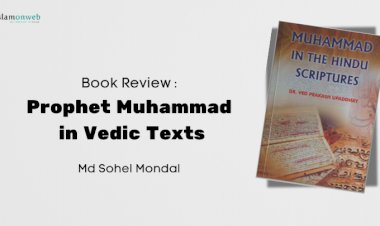















Leave A Comment